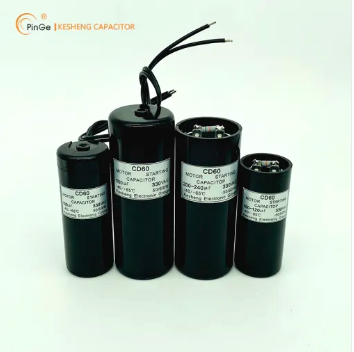What is the difference between electrolytic capacitor and normal capacitor?
Capacitors are vital components in electronics that store and release electrical energy. While they all serve the fundamental purpose of storing charge, there are notable differences between electrolytic capacitors and regular capacitors (often referred to as ceramic or film capacitors) in terms of construction, characteristics, and applications.
1. Construction:
Electrolytic Capacitors: These capacitors have a distinctive construction. They consist of two conductive plates (anode and cathode) separated by a dielectric material, usually an oxide layer formed on the anode's surface. The dielectric enables a higher capacitance value in comparison to other types of capacitors.
Regular Capacitors: Regular capacitors, such as ceramic or film capacitors, have simpler constructions. They comprise two conductive plates separated by an insulating material or dielectric. The dielectric material used varies based on the type of capacitor.
2. Polarity:
Electrolytic Capacitors: One of the significant differences is that Quality electrolytic capacitors are polarized components. They have a designated positive (+) and negative (-) lead. Applying voltage in the wrong polarity can result in damage or even failure due to the breakdown of the oxide layer.
Regular Capacitors: Regular capacitors are non-polarized, meaning they can be connected to a circuit without regard to the orientation of positive and negative terminals.

3. Capacitance and Size:
Electrolytic Capacitors: Electrolytic capacitors offer larger capacitance values compared to regular capacitors. This high capacitance is beneficial in applications where a significant amount of energy storage is required. However, they tend to be physically larger due to the construction required for their higher capacitance.
Regular Capacitors: Regular capacitors have smaller capacitance values compared to electrolytic capacitors. They are more compact and are often chosen for applications where size is a constraint.
4. Voltage Ratings:
Electrolytic Capacitors: Electrolytic capacitors typically have higher voltage ratings, making them suitable for applications where higher voltage levels are present, such as power supply circuits.
Regular Capacitors: Regular capacitors may have lower voltage ratings compared to electrolytic capacitors. They are commonly used in low-voltage applications like signal coupling and filtering.
5. Applications:
Electrolytic Capacitors: Kesheng Electrolytic capacitors are commonly used in applications that require high capacitance values, such as power supply filtering, motor starters, and audio systems. Their polarity sensitivity and ability to handle higher voltages make them suitable for specific roles.
Regular Capacitors: Regular capacitors find use in a wide range of applications. Ceramic capacitors are often used for decoupling, bypassing, and high-frequency filtering due to their small size and high frequency response. Film capacitors are utilized in various applications, including audio coupling, timing circuits, and voltage smoothing.
In summary, electrolytic capacitors and regular capacitors have distinct characteristics that make them suitable for different purposes. Electrolytic capacitors offer high capacitance values and are often used in applications that demand energy storage and voltage regulation. Regular capacitors, on the other hand, are versatile components utilized in diverse roles, from signal coupling to filtering. Understanding their differences is essential for selecting the right capacitor type for a given electronic circuit or application.



